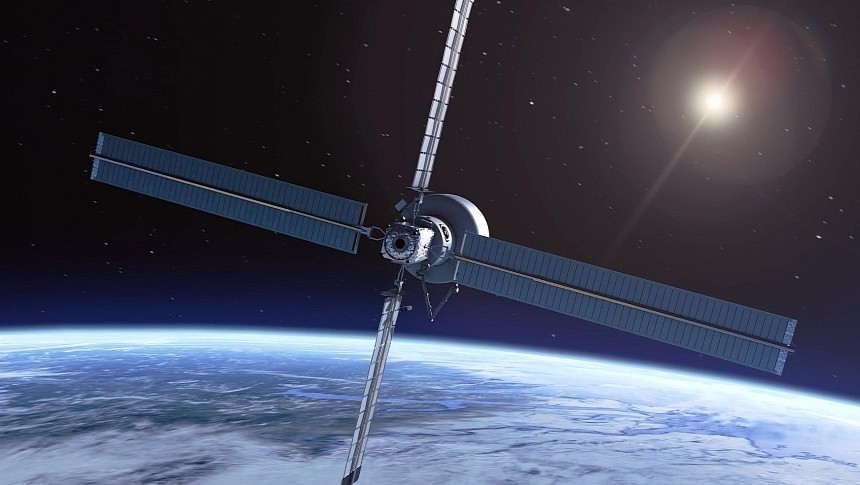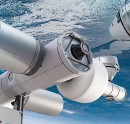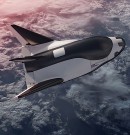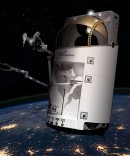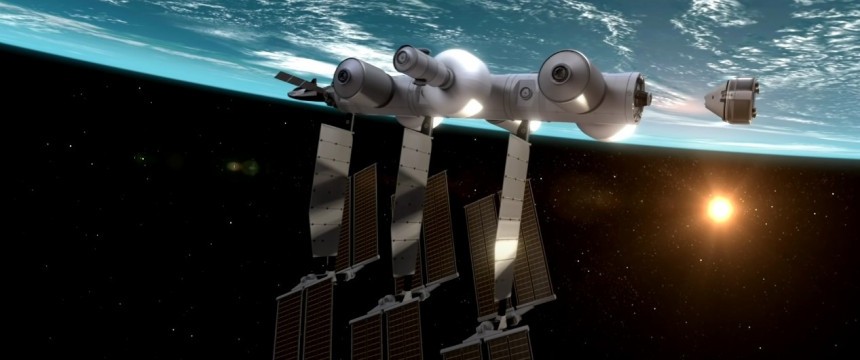In a relatively short period of time, space exploration has gone from being mostly an exclusive government activity to being the new promised land of human endeavors. After the rise of private space companies showed just how economically sound their involvement is, and how the tech they develop is at times extraordinary, even NASA is now looking to outsource as many of its ideas as possible.
At the time of writing, the American space agency is collaborating with several companies, including startups that are not part of the established space exploration industry. And a number of newcomers, like SpaceX and Blue Origin, have become so important that they're even involved in large-scale programs the likes of Artemis.
Whereas programs like the one for the exploration of the Moon are grandiose in scale, it's in low-Earth orbit where the money is. NASA knows this, and last week it announced how it plans to make the most of it by taking advantage of what private space companies have to offer.
Through a program named Collaborations for Commercial Space Capabilities-2 (CCSC-2), the space agency named seven companies and the technologies that will help it advance its goals in the space closest to our planet. You can read all about it below. Before getting into it, though, it's important to note that these projects are, at this stage, unfunded with taxpayer money. There is a note though that "each party bears the cost of its participation through the agreements."
#1. Blue Origin – Jeff Bezos' company, already selected to build the human-rated lander for the Artemis V mission, has been tasked with coming up with ways to ensure "integrated commercial space transportation capability." Although no details on what tech will be used for the task were provided, it's safe to assume the company's current reusable rockets and spaceships will play a big part in it.
#2. Northrop Grumman, a much older partner to NASA than Blue Origin, will become part of NASA's goal of sending autonomous and robotic hardware into space, with the goal of contributing to scientific research and manufacturing capabilities. Again, we have no details on what hardware will be used for the task.
#3. Sierra Space, a very ambitious newcomer to the space exploration table, will contribute as well to the transportation of hardware to low-Earth orbit, but it will also help advance NASA's goals with the help of the space station it is working on together with Blue Origin.
#4. SpaceX is without a doubt the world's favorite private space exploration company, and the one that helped America launch its astronauts from home soil for the first time in a decade. It too will help with the Artemis program, but when it comes to low-Earth orbit, it has now been tasked with developing new versions of the Dragon spaceship, but also the Starship. Starlink, the company's satellite-based internet service, will also play a part,
#5. Special Aerospace Services is a less visible space company, but a pair of robotic tech it is working on, called Autonomous Maneuvering Unit (AMU) and the Astronaut Assist-AMU has caught NASA's eye. The agency is now planning to use the hardware to provide "commercial in-space servicing and mobility applications," including retrieval, and inspection of in-space systems.
#6. ThinkOrbital will provide NASA with access to self-assembling, single-launch, large-scale orbital platforms, which will be used in the near future for -space research, manufacturing, and astronaut missions. Large-scale in-space fabrication using a tech named CONTESA is also on the table.
#7. Vast is last but not least on this list of seven NASA partners for the rise of the low-Earth orbit economy. It will contribute to the common good with its ambitious artificial gravity space station, Haven-1, but it will also work on a larger space structure that could be used in the future.
The space agency says it laid out all these plans and partnerships not only as a means to kickstart the orbital economy, but also because this approach will "boost education and job growth in science and engineering."
The new batch of companies selected last week comes as a natural evolution of a plan the agency laid out for the first time in 2019. In simple words, it's a strategy that aims to still give it access to orbit even after the International Space Station (ISS) is discontinued.
What the selection means for the rest of our world is however much more important. If all goes according to plan, we might very well be witnessing the birth of a true human presence in space. One which in the not-so-distant future might include orbital shipyards to help with our expansion in the solar system, and perhaps even permanent settlements not only for professional astronauts, but for civilians who choose to live out their lives in space as well.
Whereas programs like the one for the exploration of the Moon are grandiose in scale, it's in low-Earth orbit where the money is. NASA knows this, and last week it announced how it plans to make the most of it by taking advantage of what private space companies have to offer.
Through a program named Collaborations for Commercial Space Capabilities-2 (CCSC-2), the space agency named seven companies and the technologies that will help it advance its goals in the space closest to our planet. You can read all about it below. Before getting into it, though, it's important to note that these projects are, at this stage, unfunded with taxpayer money. There is a note though that "each party bears the cost of its participation through the agreements."
#1. Blue Origin – Jeff Bezos' company, already selected to build the human-rated lander for the Artemis V mission, has been tasked with coming up with ways to ensure "integrated commercial space transportation capability." Although no details on what tech will be used for the task were provided, it's safe to assume the company's current reusable rockets and spaceships will play a big part in it.
#3. Sierra Space, a very ambitious newcomer to the space exploration table, will contribute as well to the transportation of hardware to low-Earth orbit, but it will also help advance NASA's goals with the help of the space station it is working on together with Blue Origin.
#4. SpaceX is without a doubt the world's favorite private space exploration company, and the one that helped America launch its astronauts from home soil for the first time in a decade. It too will help with the Artemis program, but when it comes to low-Earth orbit, it has now been tasked with developing new versions of the Dragon spaceship, but also the Starship. Starlink, the company's satellite-based internet service, will also play a part,
#5. Special Aerospace Services is a less visible space company, but a pair of robotic tech it is working on, called Autonomous Maneuvering Unit (AMU) and the Astronaut Assist-AMU has caught NASA's eye. The agency is now planning to use the hardware to provide "commercial in-space servicing and mobility applications," including retrieval, and inspection of in-space systems.
#6. ThinkOrbital will provide NASA with access to self-assembling, single-launch, large-scale orbital platforms, which will be used in the near future for -space research, manufacturing, and astronaut missions. Large-scale in-space fabrication using a tech named CONTESA is also on the table.
The space agency says it laid out all these plans and partnerships not only as a means to kickstart the orbital economy, but also because this approach will "boost education and job growth in science and engineering."
The new batch of companies selected last week comes as a natural evolution of a plan the agency laid out for the first time in 2019. In simple words, it's a strategy that aims to still give it access to orbit even after the International Space Station (ISS) is discontinued.
What the selection means for the rest of our world is however much more important. If all goes according to plan, we might very well be witnessing the birth of a true human presence in space. One which in the not-so-distant future might include orbital shipyards to help with our expansion in the solar system, and perhaps even permanent settlements not only for professional astronauts, but for civilians who choose to live out their lives in space as well.
